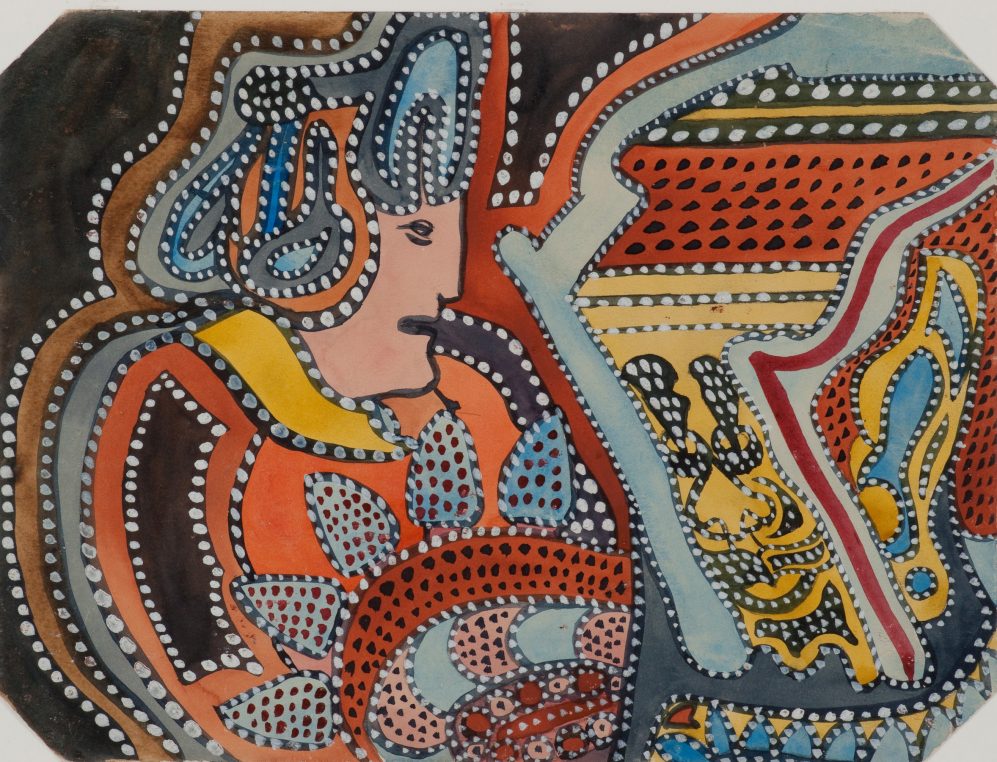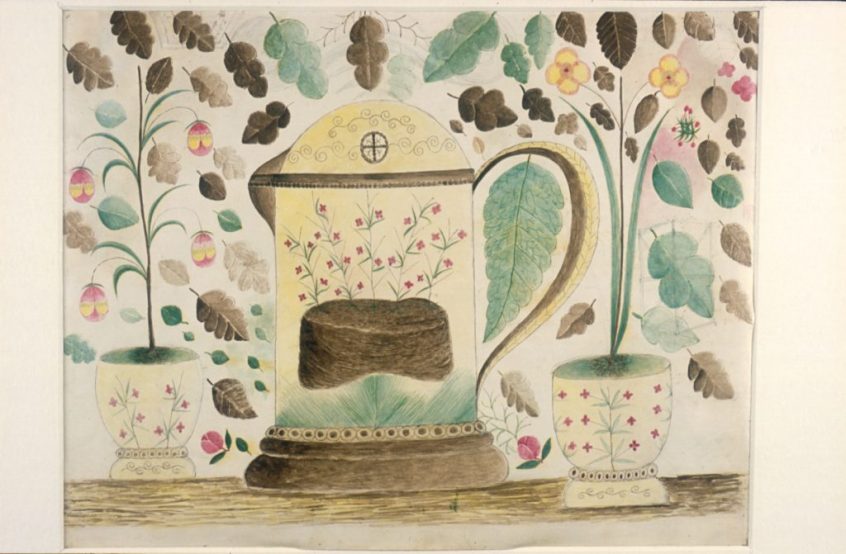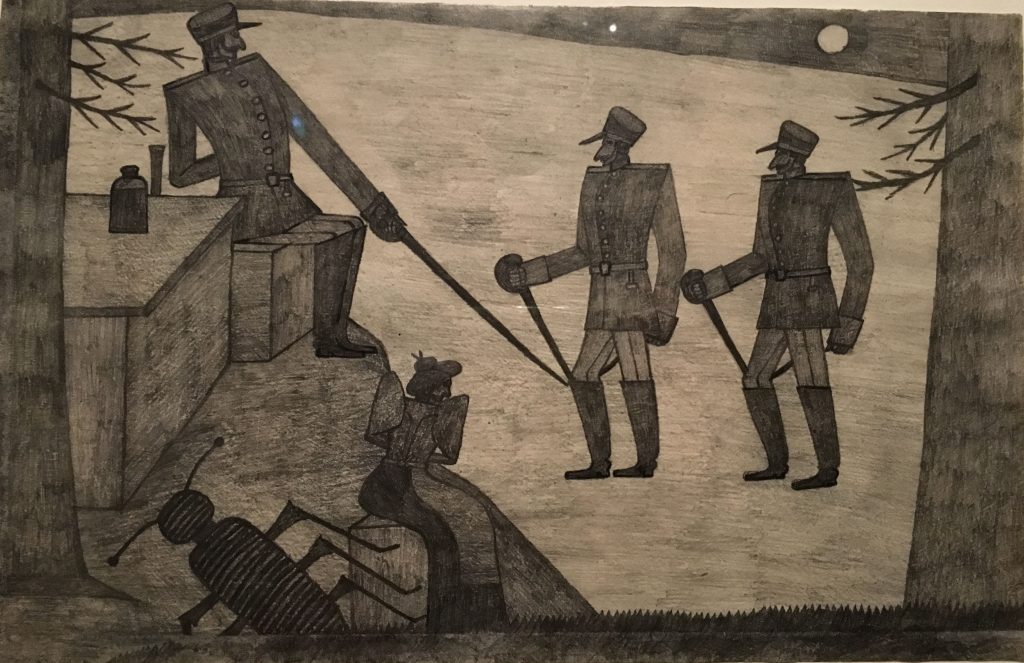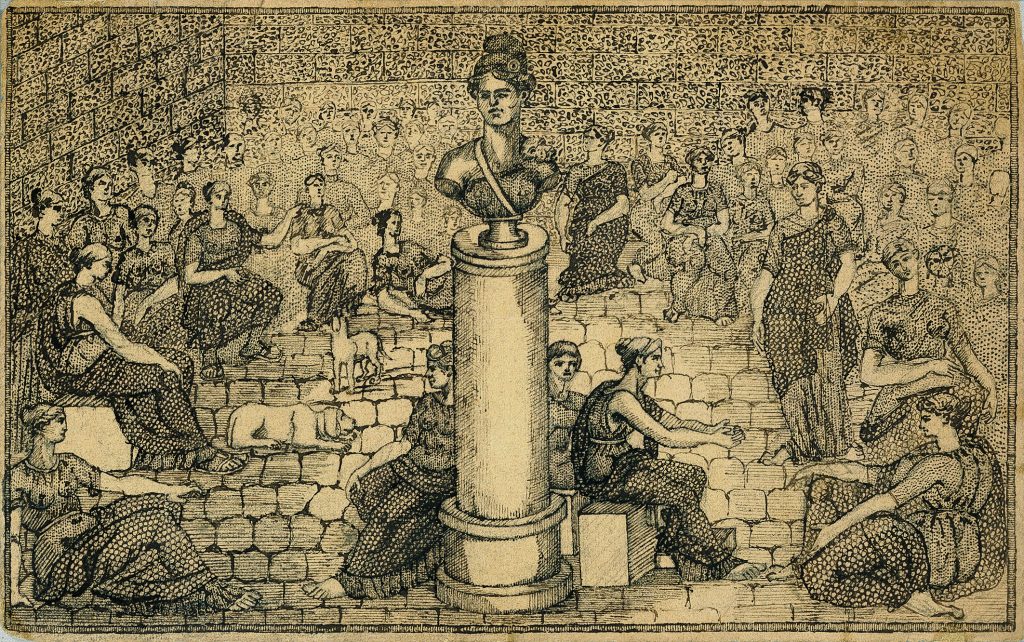
August Klett, Heillbronn Sugar factory, March 23, 1991, Sammlung Prinzhorn, Universitätsklinikum Heidelberg
Maison de Victor Hugo on Place des Vosges is dedicated to the history of the writer’s family and the exhibition “La folie en tête, aux racines de l’art brut” (to the roots of art brut) starts with photographs of his daughter Adèle and his brother Eugène who lived in asylums. At the end of the 19 th century, alienated patients as they are called, are invited to develop their art by a few psychiatrists who collect their paintings, drawings, embroideries. Adèle herself played the piano every day. The show which comprises 200 works, is based on four such collections in Switzerland, Scotland, Germany and France ant it is riveting.
It starts with the Scottish institution of Royal Chrichton Hospital in Dumfries where Dr Browne, in 1838, used theatre, music and art as a therapy for his patients. He collected three volumes of drawings and paintings including portraits of the sicks made by William Bartholomew, an interned artist who became his assistant.
Then comes Dr Auguste Marie in Villejuif (near Paris) in 1900 where he founds a “Musée de la Folie” based on 1 500 pieces of his collection. He was a student of Charcot and himself a painter, and worked at Hôpital Sainte Anne where the arts department is still active today. He is noticed by André Breton and exhibitions of these “crazy” artists are organized on boulevard Raspail. After his death, part of his collection goes to painter Jean Dubuffet who will exhibit the paintings in 1967. They are now in Lausanne at Musée d’Art brut which lent a lot of pieces for the show.
Dr Morgenthaler worked in Waldau near Bern from 1913 to 1920 and used psychoanalysis with his patients. He contributed to turning asylums into therapeutic institutions rather than prisons for the mad. His patients used embroidery on fabric, wood carving, metal and terra cotta as well as drawing and painting. He daily interpreted their art to help cure them. This collection is held in Bern at the Psychiatric museum.
Hans Prinzhorn was a psychiatrist and is mostly famous for having been the meticulous curator of Heidelberg University’s Psychiatric hospital collection at the beginning of the 20 th century. The works were published as early as 1922 under the title of “Expressions of madness” and were very influential on avant garde artists such as Paul Klee and Max Ernst. According to Prinzhorn, the “crazy artist” makes truth more visible. 200 works toured Germany and France in 1929. Many of these artists were part of the nazi exhibition of degenerate art. At least 21 will die in gas chambers. Again it is thanks to Dubuffet that the collection is rediscovered in the 1960’s. It holds 5 000 works today all kept at Heidelberg University.
There is a large variety of drawings and paintings here and even if Art brut is not familiar, you will love this intriguing exhibition. And the house on place des Vosges is totally wonderful. (Maison de Victor Hugo, until March 18, closed on Mondays)
Share this Post




